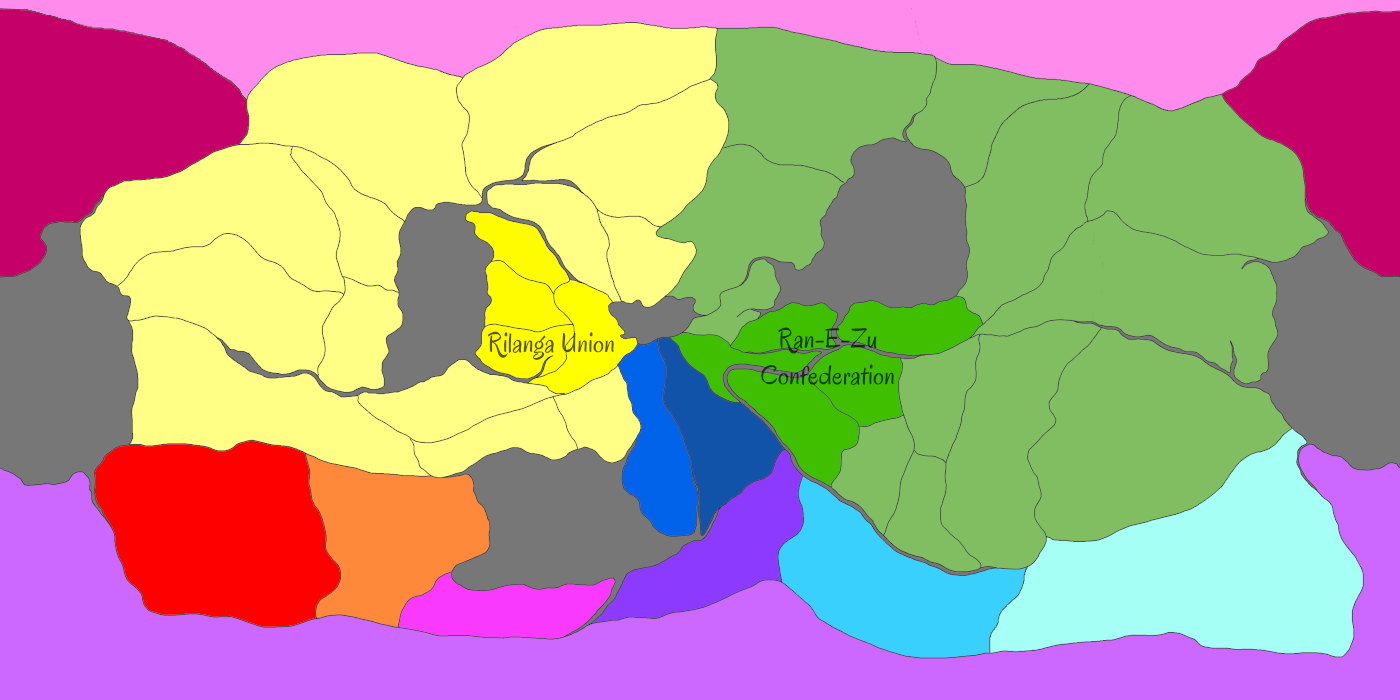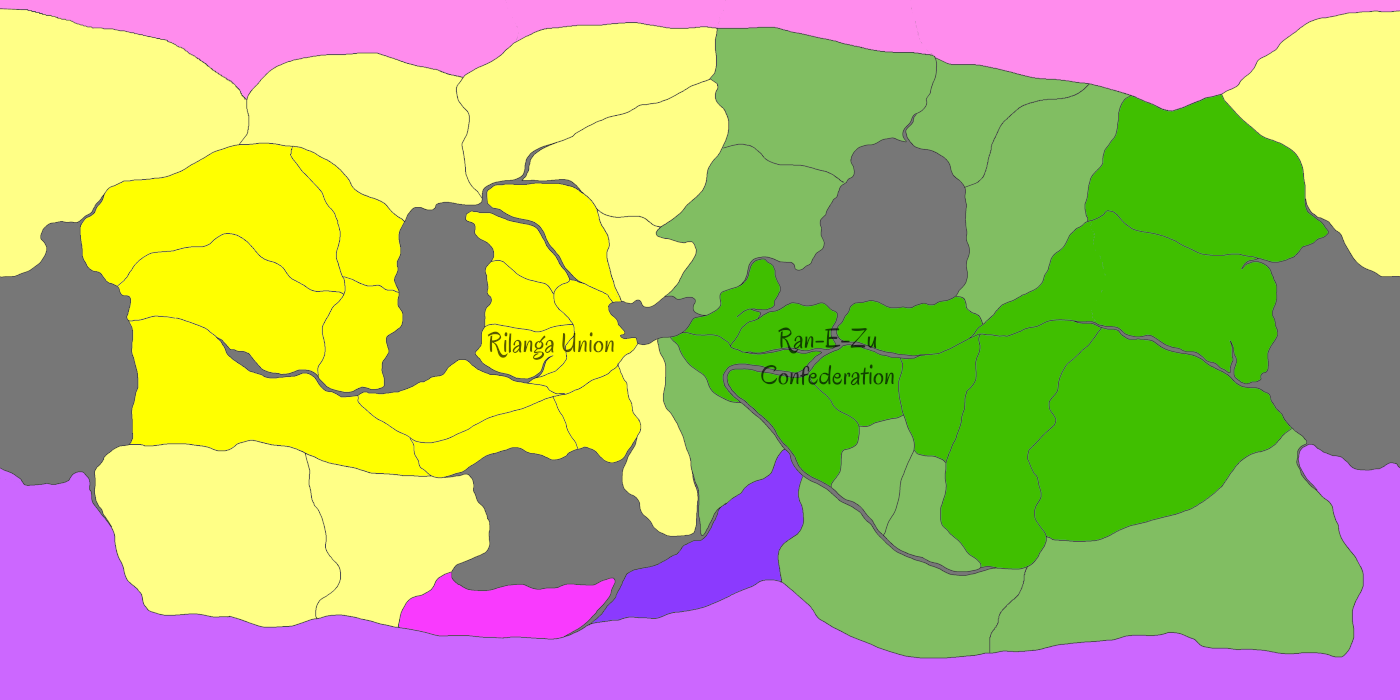The Final War
Zem Runeki was a global war on Ranul that wiped out 97% of the Rul species and most of the ecosystem.
The Conflict
Battlefield
The war was fought mostly on Mustik Hamesi where most of the population was concentrated. Mining facilities on Mustik Kogli were also targeted in order to deny the enemy access to resources.
Armies met in the deserts between the fertile regions, sometimes advancing into populated areas only to be driven back. Bomber aircraft attacked major cities in order to weaken and demoralize the enemy, not only with explosive charges but also with biological or chemical weapons. While attacks on civilian settlements were rare in the beginning, they became more common near the end of the war as both sides grew more desparate to win.
Factions
At the Beginning of the War
Near the End of the War
Outcome
The war ended with a devastating series of attacks from both the Ran-E-Zu and the Rilanga, targeting the population centers near the three seas on Mustik Hamesi. As a result, only a small fraction of Ranul's population survived.
The majority of the urban areas were destroyed, as were the ecosystems surrounding them.
Aftermath
Ecological Damage
Besides the physical damage to the buildings and the oasis jungles, the surface was heavily contaminated with radioactive fallout from the pivoki detonations and with the residue of biological and chemical warfare agents. The formerly fertile regions near the three seas remained uninhabitable for about 7 years. Though the plantlife adapted and recovered relatively quickly, it was poisonous to wild animals and people alike. The environment was less contaminated up in the Ralenlos Mountains, due to the distance from the population centers and the rain washing the contaminants down to the seas. However, this area had been rather barren to begin with.Casualties
By the time the privileged people moved to the shelters in the mountains, the war had already cost the lives of almost 60 million people, roughly 16% of Ranul's population at the time the fighting started. Historians estimate that 297 million Rul died during the final wave of attacks, when both sides resorted to desparate measures and released the worst weapons of mass destruction found in their arsenals. In the shelters, about 5.8 million Rilanga and 5.2 million Ran-E-Zu survived, which equals roughly 3% of the population before the Final War. Those few that survived outside the shelters were later found to have died of either the widespread contamination or in fights over limited resources. The lack of resources also affected the survivors within the shelters. Over the course of 8 years, their numbers decreased further to about 8.9 millions in total.Socio-Political Change
The horrendous consequences of Zem Runeki served as a long overdue wake-up call for the ideologists on both sides. In the year 1 VZR, the political leaders of both survivor factions met for the Peace Conference in one of the Ran-E-Zu shelters. They agreed to start over with a clean slate, as it was the only way to ensure the survival of the Rul species as a whole. What remained of the Rilanga and the Ran-E-Zu became one single culture, the Rilsu. This union was solidified with the creation of the Rile language, redistribution of both sides' supplies and a repopulation program that systematically interbred the two ethnicities so that future generations could not distance themselves from each other by claiming a pure lineage.
Included Conflicts
Conflict Type
War
Battlefield Type
Planetary
Start Date
5 NZR, Hudrunoma 14
Ending Date
1 NZR, Taprunoma 32
Conflict Result
global devastation and near-extinction of life
Location
Belligerents
Rilanga
Ran-E-Zu
Strength
~52,700,000
~50,700,000
Casualties
~170,000,000
~163,600,000





Comments